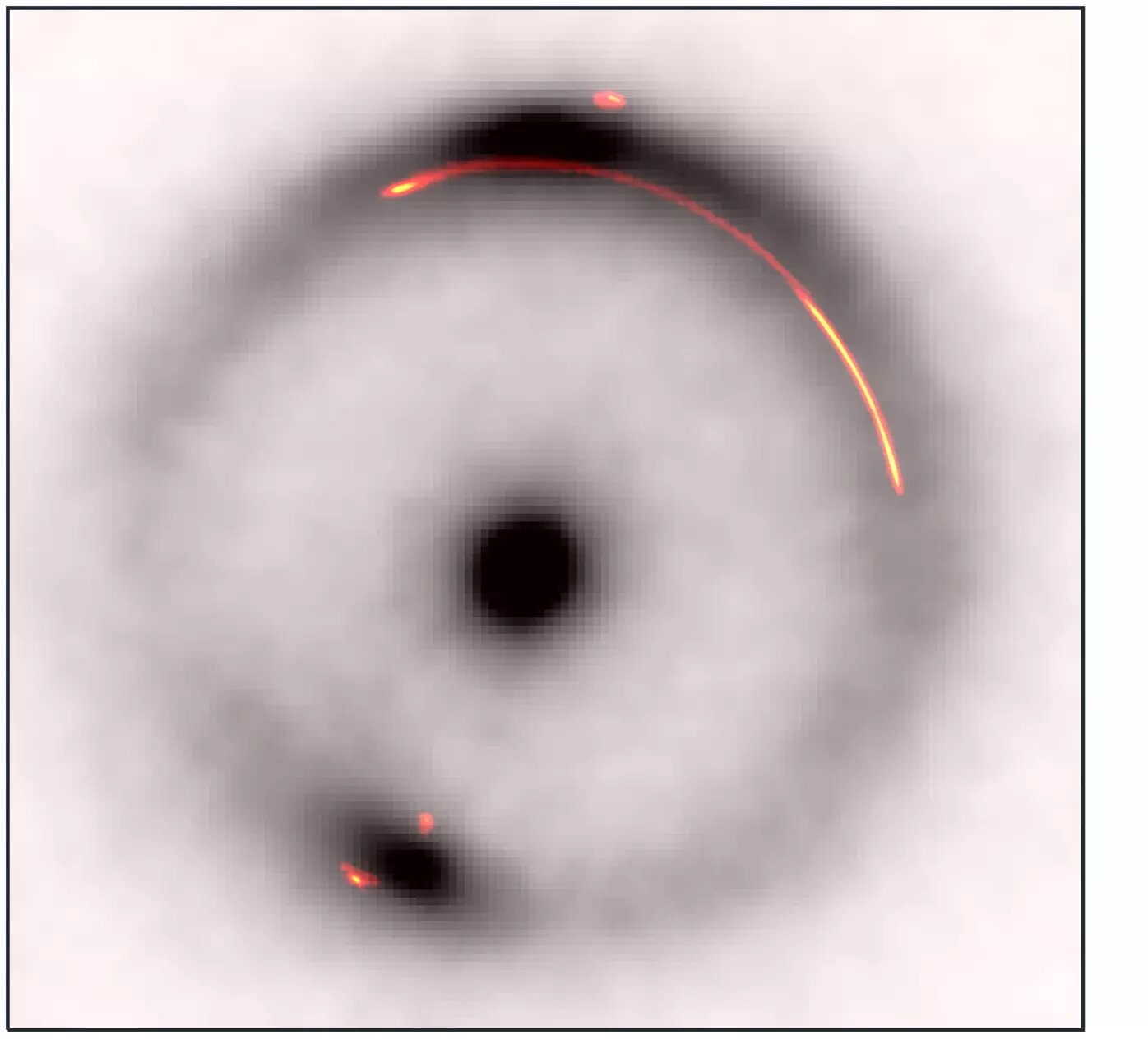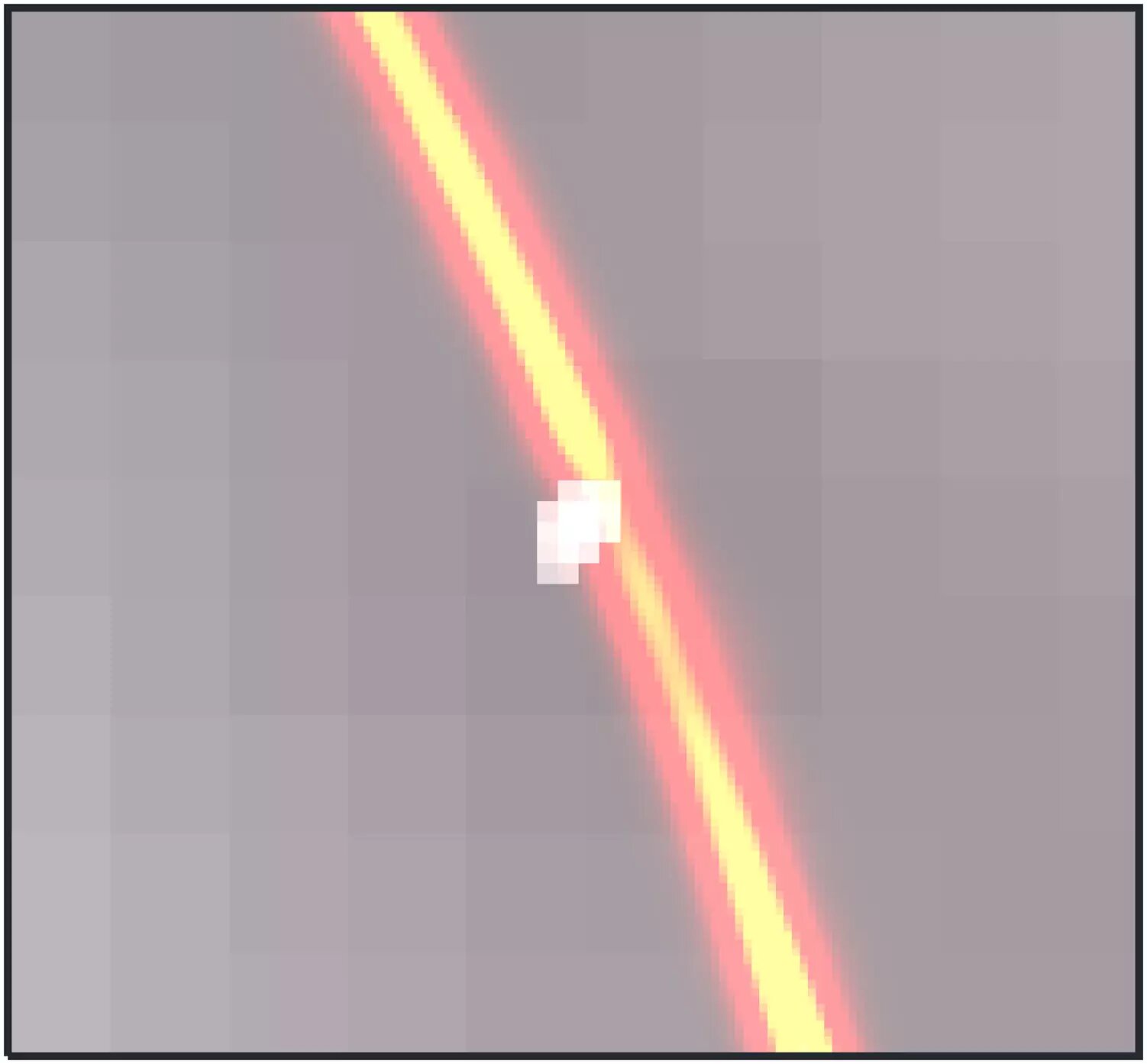🔭 Discovery of an invisible object of one million solar masses
Follow us on Google News (click on ☆)
Astronomers have been trying for decades to detect this elusive substance, whose nature could revolutionize our understanding of the fundamental laws of physics.

Overlay of infrared emission (black and white) with radio emission (color).
Credit: Keck/EVN/GBT/VLBA
An international team of astronomers has just made a remarkable breakthrough by detecting a dark object with a mass equivalent to one million times that of our Sun. To achieve this, the researchers used an ingenious technique called gravitational lensing, which exploits how light from distant galaxies is bent by the gravity of massive objects located between them and us. This method reveals the presence of invisible matter by observing the subtle distortions it imprints on the light of background celestial objects.
The experimental setup used is particularly impressive, as it combines observations from several radio telescopes distributed across the globe, virtually forming an instrument the size of the Earth. This network includes the Green Bank Telescope in the United States, the Very Long Baseline Array, and the European Very Long Baseline Interferometry (VLBI). Data correlation was performed at the Joint Institute for VLBI ERIC in the Netherlands, allowing for unprecedented precision in detecting gravitational signals.
Data analysis required the development of innovative modeling algorithms, specifically designed to handle the immense volume of collected information. The gravitational imaging technique used made it possible to map with remarkable precision the lensing effect produced by the dark object, revealing its presence through a characteristic pinch observed in the luminous arc of the distant galaxy.

The zoom shows the narrowing in the bright radio arc, where the extra mass of the dark object is gravitationally 'imaged'. The dark object is indicated by the white spot at the pinch point of the arc, but no light has been detected from it at optical, infrared, or radio wavelengths.
Credit: Keck/EVN/GBT/VLBA
This discovery fits perfectly within the framework of the cold dark matter theory, which postulates that our Universe should be populated by many clusters of dark matter of different masses. The detection of this object, located about 10 billion light-years away from us, matches theoretical predictions and paves the way for the systematic search for other similar objects. Researchers are now exploring other regions of the sky to verify whether the density of these dark objects corresponds to established cosmological models.